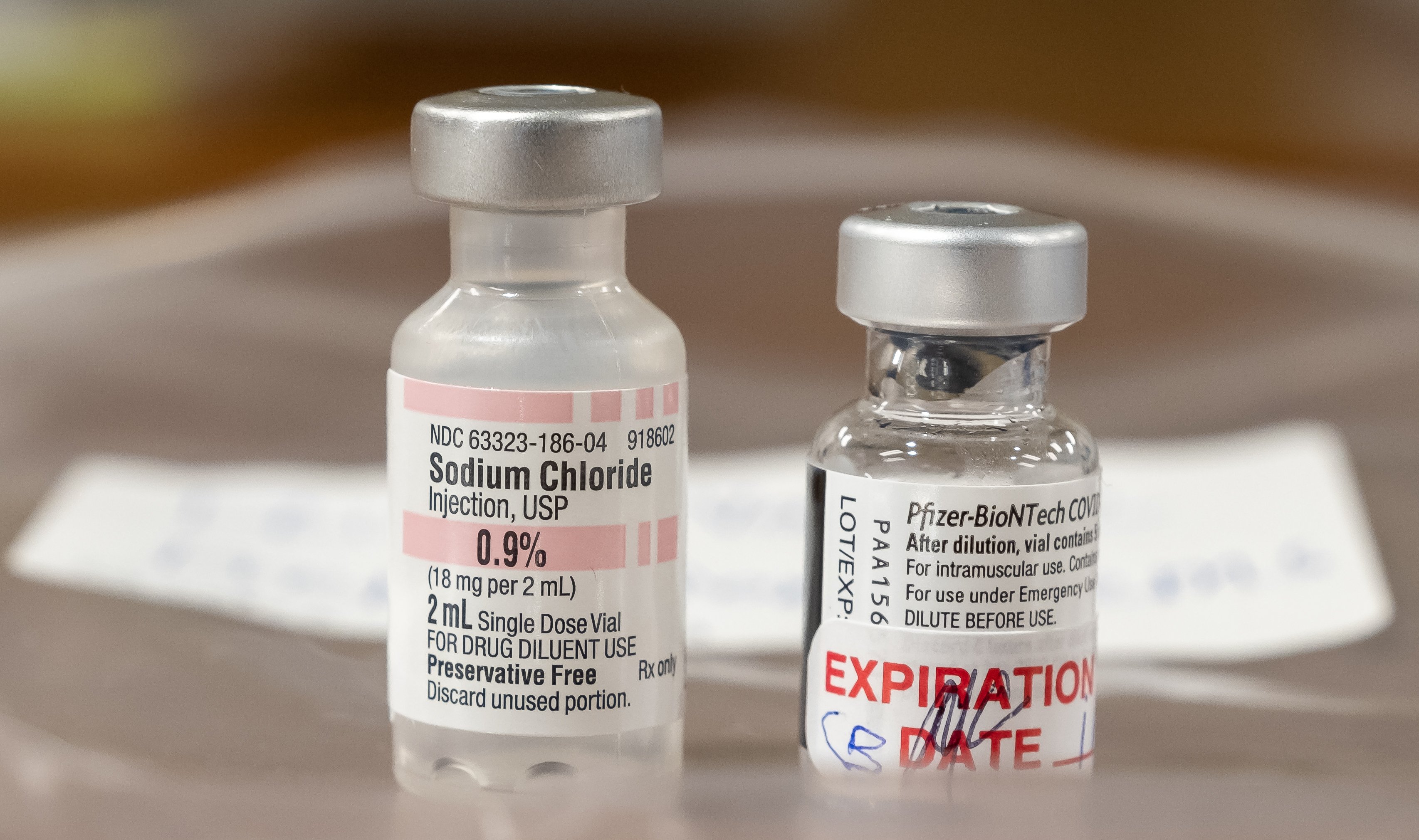
As the number of Americans vaccinated against the coronavirus rises above the number of confirmed cases of COVID-19 in the US, the Smithsonian’s National Museum of American History, in Washington, DC, has added objects from the country’s historic first distribution of the vaccine to its collection.
This week marks the one-year anniversary of the World Health Organization’s March 11, 2020, declaration that the COVID-19 outbreak constituted a pandemic. Since the virus first reached US shores early last year, deaths from the disease in the country have topped 525,000.
But the rapid development of safe and effective vaccines from Pfizer, Moderna, and now Johnson & Johnson offers real hope that the darkest days of the pandemic are finally behind us.
“The urgent need for effective vaccines in the US was met with unprecedented speed and emergency review and approval,” Anthea M. Hartig, the museum’s director, said in a statement. “These now historic artifacts document not only this remarkable scientific progress but represent the hope offered to millions living through the cascading crises brought on by COVID-19.”
Sandra Lindsay, left, a nurse at Long Island Jewish Medical Center, is inoculated with the COVID-19 vaccine. (Photo by Mark Lennihan Pool/Getty Images.
Vaccine rollout began December 14, 2020, with Northwell Health, a New York-based health provider, administering the first dose to employee Sandra Lindsay, an intensive care nurse at Long Island Jewish Medical Center. Northwell has donated that now-empty Pfizer-BioNTech vial to the Smithsonian, along with Lindsay’s scrubs, hospital identification badge, and vaccination record card.
“When Sandra Lindsay rolled up her sleeve, we weren’t just showing our team members the safety and efficacy of this groundbreaking vaccine—we were telling the world that our country was beginning a new fight back to normalcy,” said Michael Dowling, president and CEO of Northwell Health, in a statement. “I thank the Smithsonian for preserving this important milestone.”
Scrubs and Staff ID badge belonging to Sandra Lindsay, an ICU nurse at Long Island Jewish Medical Center in New York, who was the first person known to receive the vaccine in the US. Photo courtesy of the Smithsonian’s National Museum of American History, Washington, DC.
The DC museum, which shuttered March 13, has made collecting artifacts related to the pandemic a priority over the past year, introducing a Rapid Response Collecting Task Force to acquire objects in real time in April and launching a digital platform, “Stories of 2020,” for members of the public to share their experiences.
Last week, Anthony Fauci, director of the Institute of Allergy and Infectious Diseases at the National Institutes of Health, donated his personal 3-D printed model of the coronavirus to the museum, which honored him with its Great Americans medal.
A model of COVID-19. Photo by Saul Loeb-Pool/Getty Images.
A new exhibition, “In Sickness and In Health,” about the historic impact of disease in the US from colonial times to the present, was already in the planning stages before the current crisis hit.
Empty vials of the Pfizer-BioNTech and Moderna vaccines will join historic vaccination artifacts in the collection for illnesses such as smallpox, polio, and the flu. “We wanted objects that would tell the full story,” Hartig told the Associated Press. “Everything from the scrubs to the freezer unit that shipped the vaccines.”
Biological, influenza vaccine, Monovalent Type. Photo courtesy the Smithsonian’s National Museum of American History.
The National Museum of American History is currently closed—it reopened for just eight weeks beginning in September after shuttering March 13 of last year—but the institution has put together a virtual exhibition, “Outbreak: Epidemics in a Connected World Digital Exhibit,” about the spread of new infectious diseases.
See more photos from the COVID-19 vaccine acquisition below.
Two vials and Nurse Sandra Lindsay’s vaccine record card. Photo courtesy of the Smithsonian’s National Museum of American History, Washington, DC.
Empty vials of
Pfizer Inc’s Pfizer-BioNTech COVID-19 vaccine and ModernaTX, Inc.’s Moderna COVID-19 vaccines
Moderna COVID-19 vaccine vials. Photo courtesy of Northwell Health.
Moderna COVID-19 vaccine packaging. Photo courtesy of Northwell Health.
First lot of Pfizer-BioNTech COVID-19 vaccine. Photo courtesy of Northwell Health.
Vaccination card for nurse Sandra Lindsay, the first person known to receive the vaccine in the US. Photo courtesy of Northwell Health.
Scrubs and Staff ID badge belonging to Sandra Lindsay, an ICU nurse at Long Island Jewish Medical Center in New York, who was the first person known to receive the vaccine in the US. Photo courtesy of Northwell Health.
One empty glass vial which contained the first 5 doses of Pfizer Inc’s Pfizer-BioNTech COVID-19 vaccine from the first lot allocated to Northwell, used December 14. The Pfizer vaccine received Federal Drug Administration Emergency Use Approval on December 11, 2020, making it the first vaccine available in the US. Photo courtesy of the Smithsonian’s National Museum of American History, Washington, DC.
Moderna COVID-19 vaccine vial. Photo courtesy of Northwell Health.